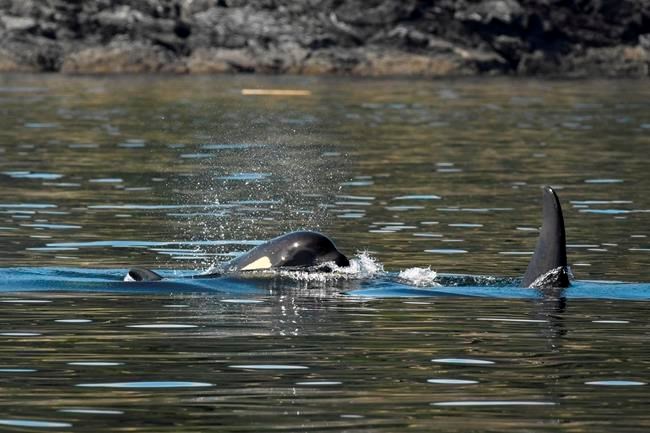A young endangered orca has been spotted off the west coast of Vancouver Island by a research crew with Fisheries and Oceans Canada.
The four-year-old female killer whale, known as J50, is emaciated and lethargic, and scientists fear she has only days to live.
Scientists in Canada and the U.S. have been working together to save her life. They became worried when her pod, last seen Friday, wasn’t spotted for several days.
“It’s a great relief that she’s still alive,” said Paul Cottrell, marine mammals co-ordinator with the Department of Fisheries and Oceans. “It’s fantastic. We’re hoping she’s going to be OK. But, obviously, her body condition has been waning in the last couple of weeks. We’re hoping she’s going to make it.”
The whale is one of just 75 remaining southern resident killer whales. As a young female, experts say, she has reproductive potential and could play a vital role in the southern residents’ recovery.
J-pod recently drew an international spotlight when another orca, J35, was spotted pushing the body of her dead calf through the water for more than a week.
DFO research crews have been out on the water every day trying to locate J50. The pod was spotted Tuesday west of Port Renfrew. J50 was with her mother, J16, and the rest of the pod.
“It was foggy up there for most of the day,” Cottrell said. “They could initially hear the whales through hydrophones and then they located them.”
Cottrell, who was on the water with the marine mammal crew in Sooke, said he was texting with the Port Renfrew crew and didn’t have any details on J50’s condition.
The first step is to complete an assessment of the orca’s health, he said. This involves collecting breath and stool samples and observing her behaviour. The next step will be to administer antibiotics.
“We’re going to make this happen, if it’s deemed appropriate to do this,” Cottrell said.
Veterinarians in the field will decide whether to give the ailing orca antibiotics, which would last between 10 and 14 days, using either a dart injector or a long pole syringe.
Teri Rowles, marine mammal health and stranding co-ordinator for the American National Oceanic and Atmospheric Administration Fisheries, said “antibiotics through injection is going to be our best course rather than antibiotics through food, because we recognize that we won’t able to treat her every day.”
However, if things go well, J50 might receive further treatment of salmon laced with medication.
Rowles said injections of antibiotics or sedatives have been given to other free-swimming whales or dolphins that were injured or entangled but it hasn’t been done for free-swimming whales in this area. What would be unique is giving the orca medication through live fish, she said.
Whale experts have been increasingly worried about J50 after a researcher last month noticed an odour on the orca’s breath, a smell detected on other orcas that later died.
Researchers took breath samples, and a drone flown above the whales last week showed that J50 is much skinnier and her body condition has gotten worse.
Rowles said such imagery has shed more light on the whales’ overall body condition and growth over time. That data has documented orcas that declined and then disappeared.
She said it became evident that “we needed to intervene to determine potentially what was the cause and whether there was anything we could do to assist her.”
While it’s not uncommon for southern resident killer whales to go unsighted for days, researchers were racing the clock to find J-pod because of the young whale’s poor health.
“It’s been a number of days since Friday, so it was great to see J50,” Cottrell said. “But again, it’s a big ocean out there so we can’t be surprised if J-pod, K-pod and L-pod are staying out in areas where they are not accessible to us.
“Hopefully, they are doing well and foraging and doing what they need to do.”
This is the largest rescue effort of a killer whale along the Canadian and American coast since 2002, when an orphaned northern resident killer whale known as Springer was captured and moved.
Springer was two years old when she was found in Puget Sound near Seattle, ailing and separated from her pod. She was the first orca to be rescued, rehabilitated and successfully released back into the wild.
— With files from The Associated Press and The Canadian Press



